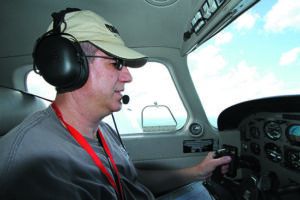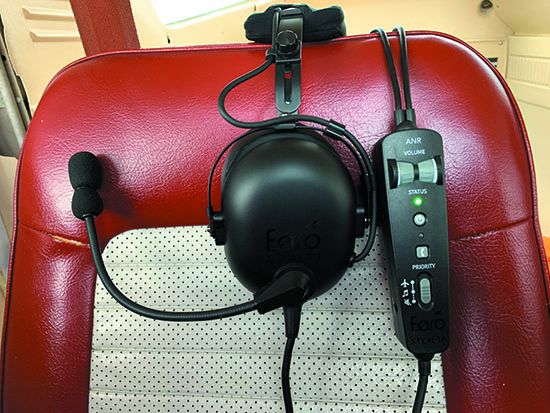When we reviewed the Stealth 2 ANR headset (January 2020 Aviation Consumer), we found that it had acceptable audio quality, good Bluetooth connectivity, was eyeglasses friendly and had moderate clamping pressures. Considering the $449 price (the set is sold through Sporty’s), we think those rankings make it a good solution for students and passengers—stash it in the back cabin as a spare. But we don’t initially know how headsets will survive the test of time.
We’ve been critical of headsets for long enough to know comfort isn’t the only factor, although it ranks near the top—something that Lightspeed and Bose have mostly nailed. So we tossed the Stealth 2 into our long-term eval pool to see how they look, feel and sound after a couple years of hard time. We aren’t gentle.

We’re critical of important design traits—including high point of failure components to include the build quality of the audio plugs and cables, the microphone boom and even the earpads. Which on the Stealth 2 are huge. Turns out that’s a double-edged sword.
That’s because the big 1-inch-thick earpad makes it easy to slide in thin-templed glasses (the headset-friendly Flying Eyes models are perfectly matched, from our use), but perhaps too big for small faces. As we found initially, the 16-ounce Stealth 2 generally doesn’t work we’ll for kids or anyone with a tiny head and small face. They do work we’ll with hats.
As we found originally, the thumb knob adjustments on the headband’s rails work we’ll for getting a good fit, and a couple of users in our eval pool thought the Stealth 2 had impressive comfort, but others (Bose and Lightspeed wearers) weren’t impressed. Like any headset, try it before you buy it. Unanimously, the flexible and highly adjustable microphone boom got high marks
We’ve heard a couple reports of extremely poor battery endurance (presumably from defective sets), but we had no problem when using two Energizer alkaline AAs. We also had no problem with Bluetooth connectivity. ANR performance is mediocre, from our use. In noisy cabins with engines at full power, the set would rumble, with the ANR microphones obviously working overtime. With any headset, understand that you’ll need the best fit for the best noise-canceling performance.
“The ANR feature seemed to occasionally generate some noise of its own, which was a minor annoyance (with an emphasis on minor),” Ken Katz told us after a few flights with the Stealth 2 in his late-model Archer. Katz reported just a slight improvement in noise reduction, compared to his passive David Clark model. He was impressed with the set’s connectivity with his iPhone for entertainment and iPad for the ForeFlight app’s audio interface.
If you can accept a few of the Stealth 2’s limitations (including audio cables that we think are too short), we still think the set is a decent value. Of equal importance, we’re pleased that it survived hard use in the real world. Contact www.sportys.com.


